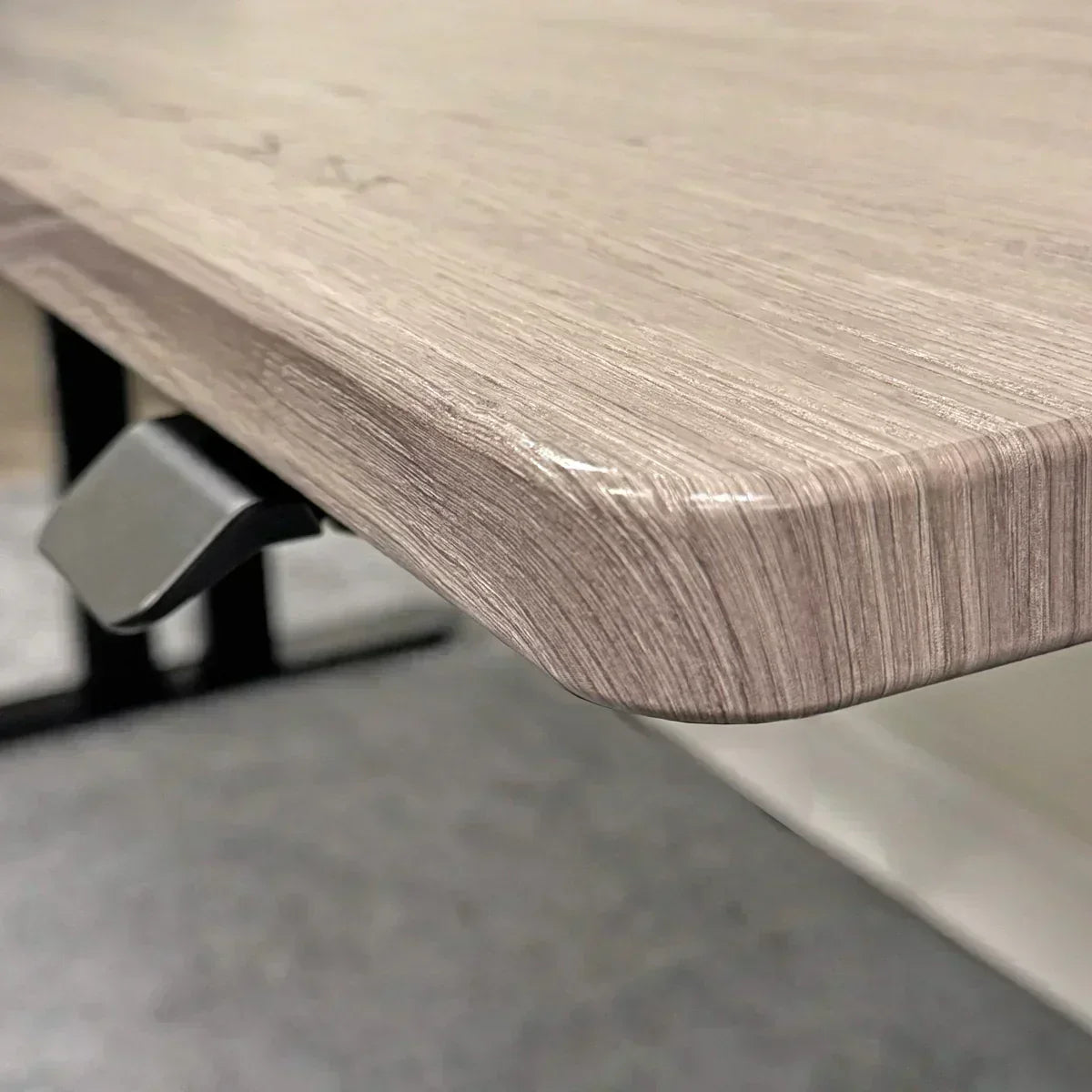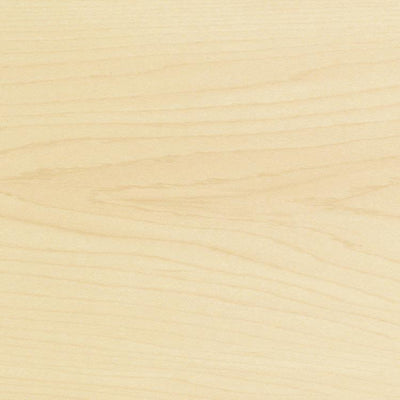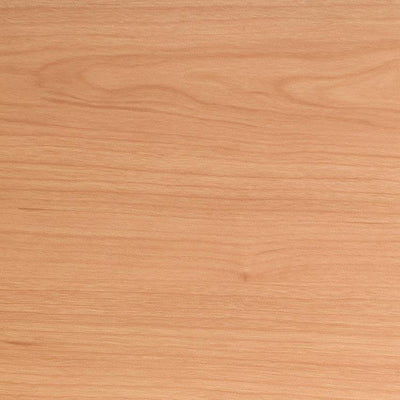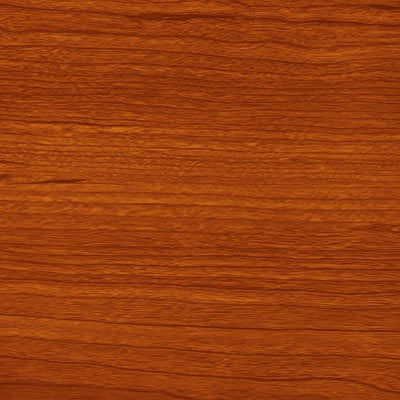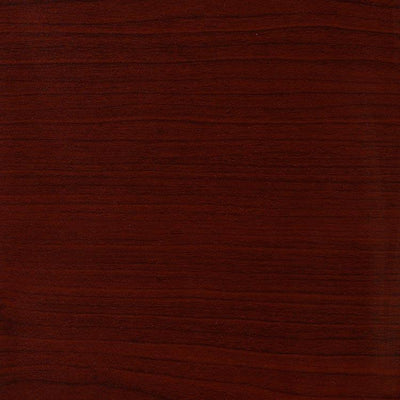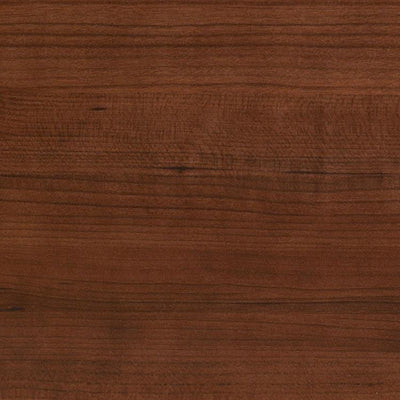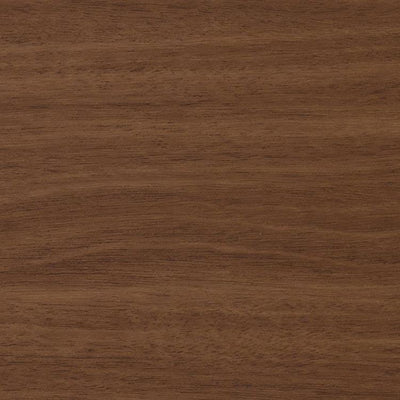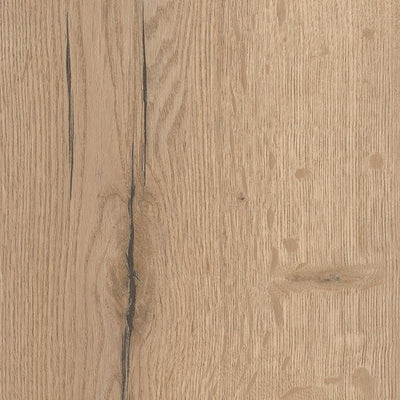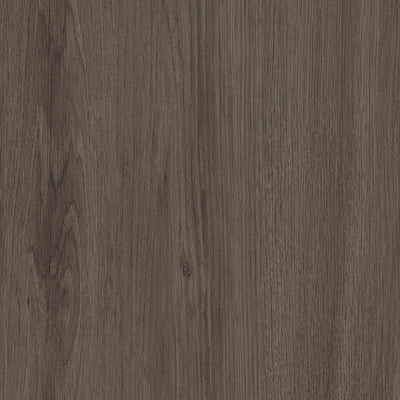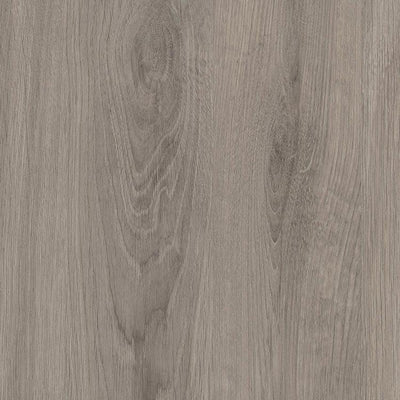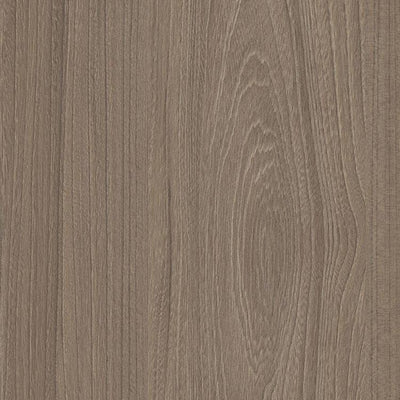3D lamination is applied at a high temperature and high vacuum pressure to perfectly bond the laminate to the wood core at the molecular level.
The conventional process for manufacturing a table top (so-called high-pressure lamination, or "HPL") involves gluing down a thin sheet of laminate to the top of an MDF (particle board) panel. Melamine, or some other low-cost material, is typically glued to the bottom of the panel to protect the wood. Finally, PVC plastic strips, usually matching the color of the top lamination, are glued down to all four edge surfaces.
Hundreds of manufacturers use this traditional method of fabricating tops for office desks and tables every day. Due to the inflexible nature of the laminate sheets, the result is a rectangular product with sharp edges where the six sides meet, and usually on all four corners as well. Because of the inflexibility of standard HPL, T-molding, edgebanding, visible seams or other special edge treatments are always required to make a desktop. Each of these has significant disadvantages and long-term durability and visual appearance.
3D lamination is a state-of-the-art process adopted by very few manufacturers outside of health care. While 3D laminate film materials are more expensive than sheet laminate, there is an inherent cost saving in labor. This is because a single film of laminate can be wrapped entirely around the topandsides of the wood in a single operation, eliminating the need to separately glue down PVC strips to the four edges of the tabletop. The result is a far superior product at a comparable cost to conventional HPL. With 3D lamination, the wood can be contoured for ergonomic edging and other features, including grommet holes, before the laminate is applied. Once the laminate is applied, the tabletop takes on the look of having been extravagantly carved out of a single slab of hardwood. Same look, a fraction of the cost.
